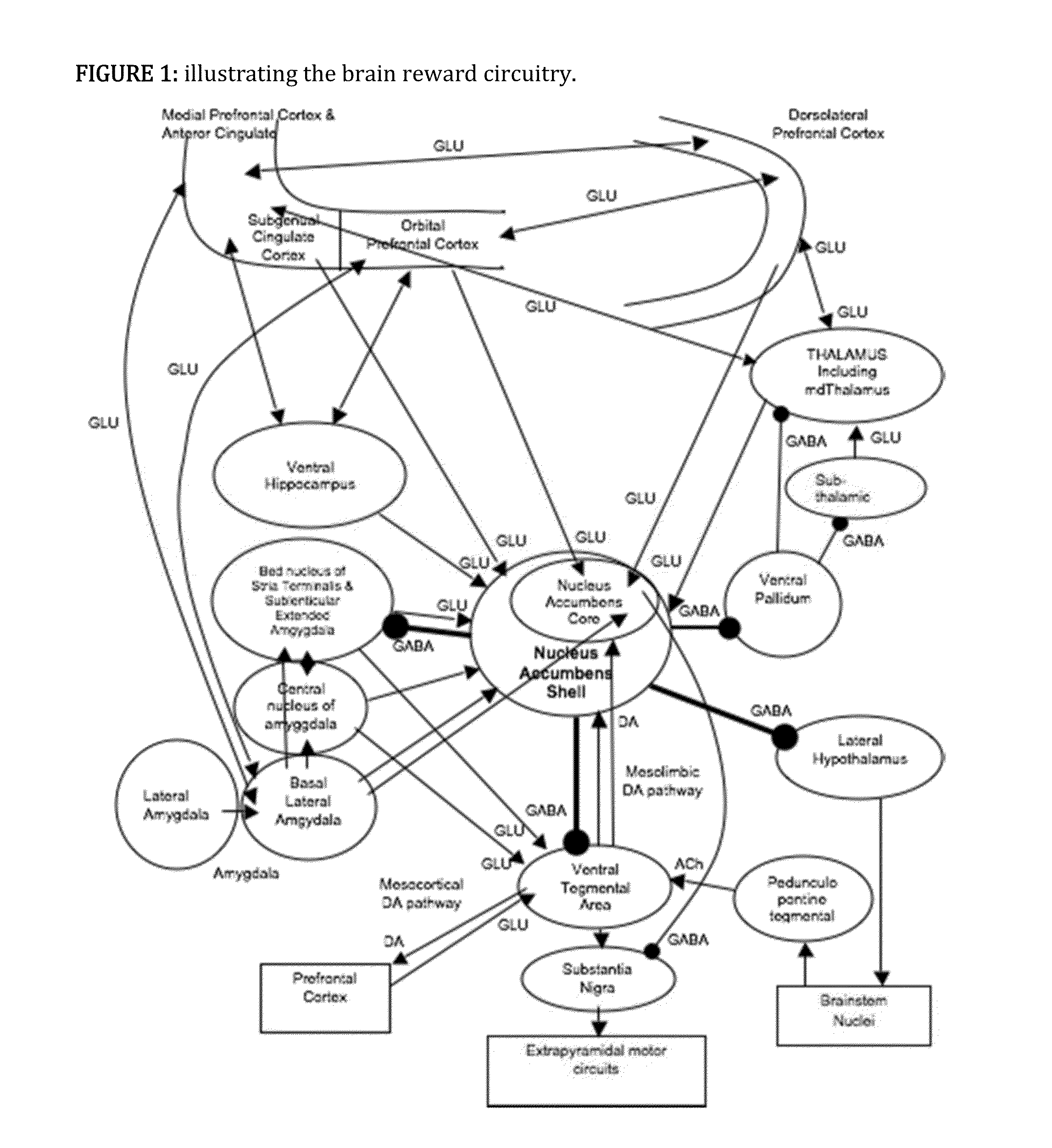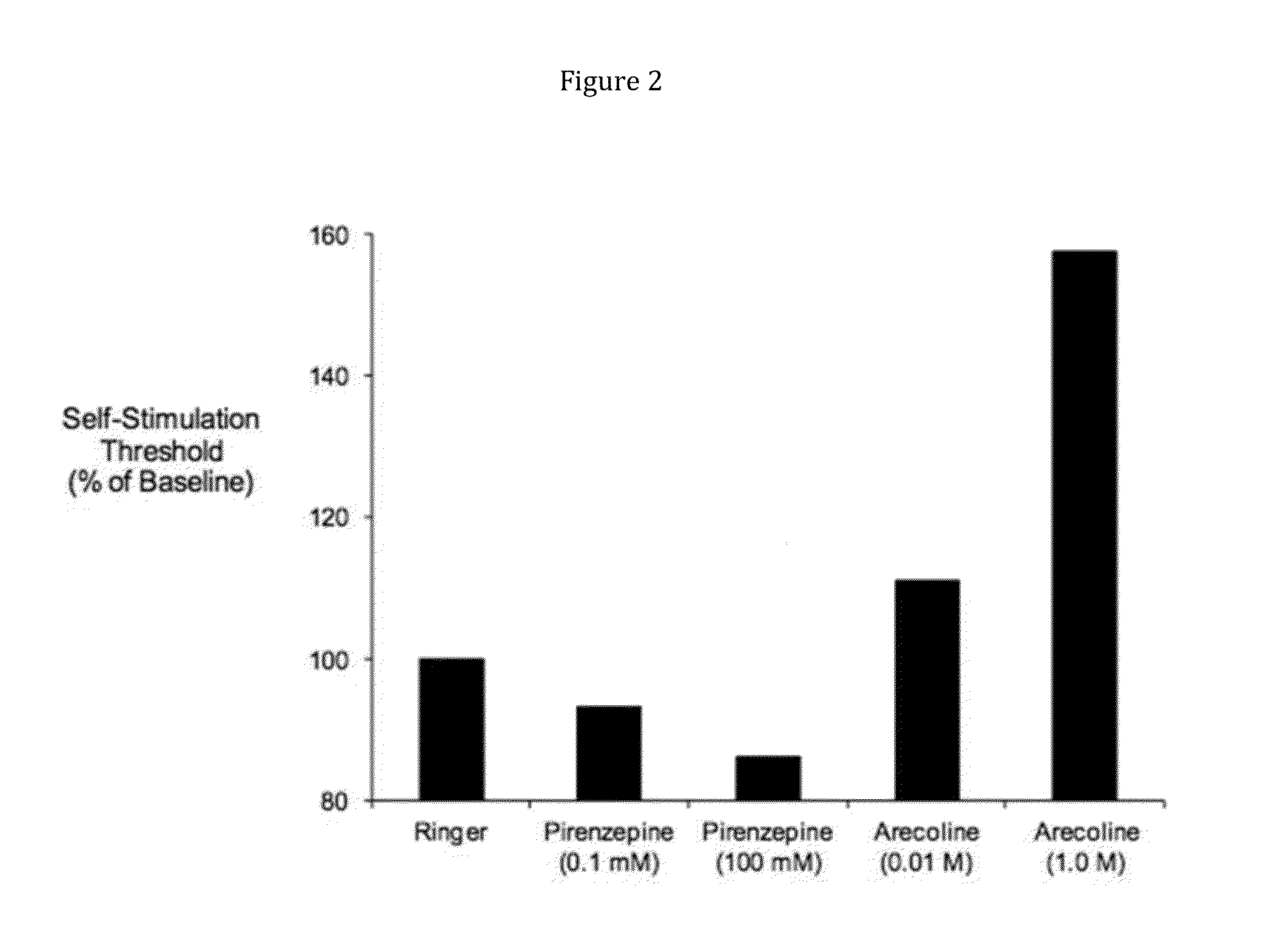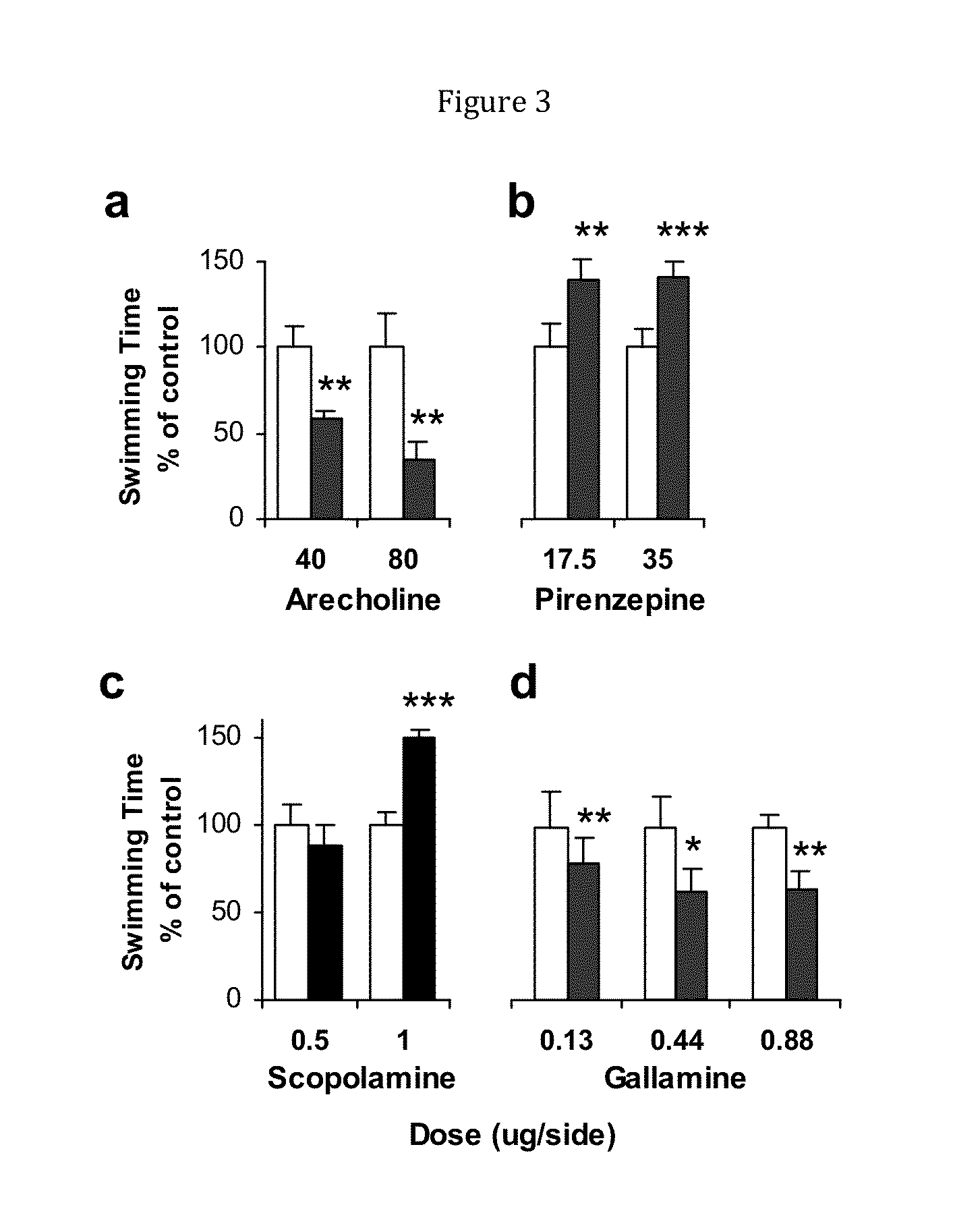Methods of treating behaviorial and/or mental disorders
a behavior and/or mental disorder technology, applied in the field of methods and compositions for treating behavioral and/or mental disorders, can solve the problems of disrupting lives, not being well tolerated, and extreme troubling to sufferers, and achieve the effects of lessening the symptoms of depression
- Summary
- Abstract
- Description
- Claims
- Application Information
AI Technical Summary
Benefits of technology
Problems solved by technology
Method used
Image
Examples
example
[0404]FIG. 1 is a diagram illustrating the interactions of the brain reward circuitry.
[0405]FIG. 2 is a graph illustrating the effect of antagonism of M1 mAChR and agonism of mAChR in the NAcShell. The discrete trial current-threshold intracranial self-stimulation paradigm were used to assess the effect of cholinergic drugs infused directly into the NAcShell on reward, independent of performance. See below and Markou and Koob (1991) for detailed description of the paradigm. Thresholds measured in a rat vary little in the 4 pre-drug days (<7% of the mean or baseline). The non-selective mAChR agonist arecoline dose-dependently elevates threshold (0.01 M, +11%; 1.0 M, +57.5%, N=2). Pirenzepine dihydrochloride (Sigma-Aldrich, Saint Louis, Mo.), a selective M1 mAChR antagonist, dose-dependently lowers threshold (0.1 mM, −7%; 100 mM, 14%, N=2). The drugs were infused into the NAcShell at a steady rate by reversed microdialysis over the hour required to complete threshold testing. The stud...
PUM
| Property | Measurement | Unit |
|---|---|---|
| threshold | aaaaa | aaaaa |
| swimming time | aaaaa | aaaaa |
| swimming time | aaaaa | aaaaa |
Abstract
Description
Claims
Application Information
 Login to View More
Login to View More - R&D
- Intellectual Property
- Life Sciences
- Materials
- Tech Scout
- Unparalleled Data Quality
- Higher Quality Content
- 60% Fewer Hallucinations
Browse by: Latest US Patents, China's latest patents, Technical Efficacy Thesaurus, Application Domain, Technology Topic, Popular Technical Reports.
© 2025 PatSnap. All rights reserved.Legal|Privacy policy|Modern Slavery Act Transparency Statement|Sitemap|About US| Contact US: help@patsnap.com



